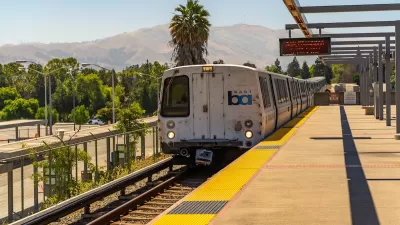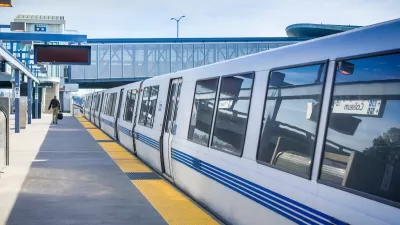Cost control and revenue generation measures prevented service cuts.

Through a combination of cost controls and revenue generation, Bay Area Rapid Transit has avoided a $35 million deficit that was originally projected for the 2026 fiscal year. Mass Transit reports that the deficit was eliminated without service cuts.
“According to BART, at the height of the pandemic when it closed rail services at 9:00 p.m., it represented a 40 percent cut in service, but it only reduced operating costs by 12 percent. The agency notes that even a 90 percent cut in service (9:00 p.m. closure, one-hour frequencies and running only three of the five BART lines) would close less than half of the FY 2027 $376 million deficit,” Mass Transit writes.
Instead, cost control and revenue generation measures included hiring freezes, running shorter trains, fare evasion reduction efforts, and inflation-based fare increases.
See a full list of the cost and revenue measures in the article below.
FULL STORY: BART eliminates projected $35 million budget deficit for FY26

Maui's Vacation Rental Debate Turns Ugly
Verbal attacks, misinformation campaigns and fistfights plague a high-stakes debate to convert thousands of vacation rentals into long-term housing.

Planetizen Federal Action Tracker
A weekly monitor of how Trump’s orders and actions are impacting planners and planning in America.

In Urban Planning, AI Prompting Could be the New Design Thinking
Creativity has long been key to great urban design. What if we see AI as our new creative partner?

King County Supportive Housing Program Offers Hope for Unhoused Residents
The county is taking a ‘Housing First’ approach that prioritizes getting people into housing, then offering wraparound supportive services.

Researchers Use AI to Get Clearer Picture of US Housing
Analysts are using artificial intelligence to supercharge their research by allowing them to comb through data faster. Though these AI tools can be error prone, they save time and housing researchers are optimistic about the future.

Making Shared Micromobility More Inclusive
Cities and shared mobility system operators can do more to include people with disabilities in planning and operations, per a new report.
Urban Design for Planners 1: Software Tools
This six-course series explores essential urban design concepts using open source software and equips planners with the tools they need to participate fully in the urban design process.
Planning for Universal Design
Learn the tools for implementing Universal Design in planning regulations.
planning NEXT
Appalachian Highlands Housing Partners
Mpact (founded as Rail~Volution)
City of Camden Redevelopment Agency
City of Astoria
City of Portland
City of Laramie





























